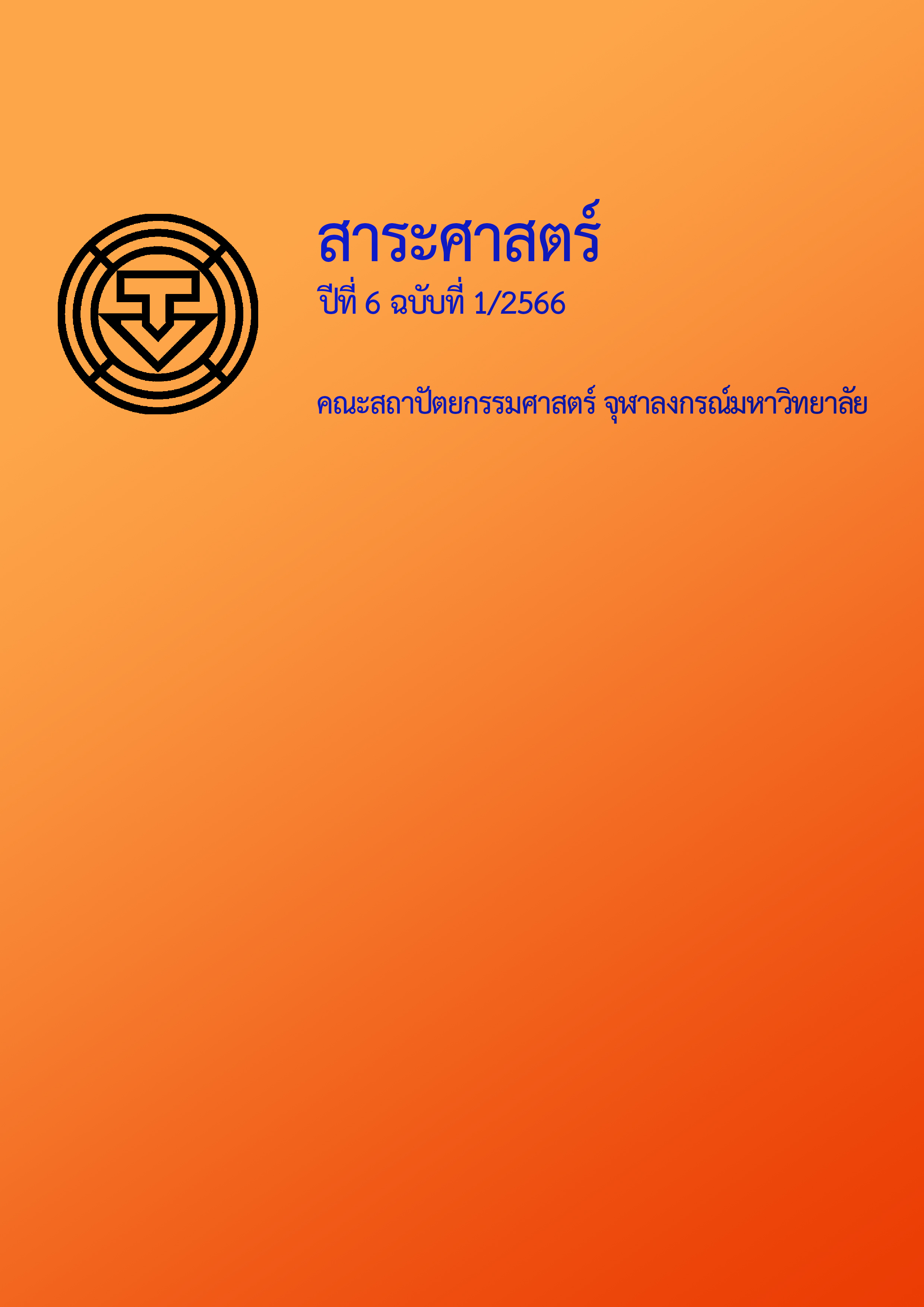การศึกษาข้อกำหนดการจ้างงานทำความสะอาดในอาคารราชการ
Main Article Content
บทคัดย่อ
พื้นที่อาคารสำนักงานมีแนวโน้มเพิ่มขึ้นประมาณ 171,000 ตารางเมตร ซึ่งคาดว่าจะเปิดให้บริการในช่วง 6 เดือนหลังของปี พ.ศ. 2564 และอีกทั้งยังมีพื้นที่เพิ่มขึ้นอีก 1.86 ล้านตารางเมตรที่กำลังก่อสร้าง จากผลการศึกษาแนวโน้มของการเพิ่มอาคารสำนักงานแสดงให้เห็นถึงจำนวนความต้องการของงานบริหารจัดการและในด้านการจัดการงานทำความสะอาดซึ่งเป็นงานอีกแขนงหนึ่งที่มีความสำคัญในการบริหารทรัพยากรกายภาพ การศึกษาในครั้งนี้ทำการศึกษาจากประเภทอาคารหน่วยงานราชการ เนื่องจากมีการกำหนดหลักเกณฑ์ในการจัดจ้าง โดยศึกษาเบื้องต้นใน 7 พื้นที่ ได้แก่ ห้องประชุม ห้องผู้บริหาร พื้นที่ภายในสำนักงาน ห้องน้ำ ห้องเตรียมอาหาร ลิฟต์/บันไดเลื่อน/บันได และโถงทางเดิน/ส่วนกลาง
การวิจัยนี้มีวัตถุประสงค์เพื่อศึกษาข้อกำหนดการจ้างงานทำความสะอาดในอาคารสำนักงานราชการและศึกษา รูปแบบ หลักเกณฑ์ วิธีการของงานทำความสะอาดในอาคารสำนักงาน และนำมาสรุปผลหารูปแบบ หลักเกณฑ์ วิธีการของงานทำความสะอาด โดยมีวิธีดำเนินการวิจัย คือ 1) ศึกษาข้อมูลและทบทวนทฤษฎีเกี่ยวกับงานบริการอาคาร งานทำความสะอาด 2) กำหนดกรอบการศึกษาและขอบเขตพื้นที่ในอาคารจากเอกสารข้อกำหนดโครงการ (TOR) เฉพาะหน่วยงานราชการที่มีการจัดจ้างงานทำความสะอาด จากหน่วยงานกรณีศึกษาจำนวน 8 อาคาร 3) ประมวลผลและวิเคราะห์เพื่อสรุปผลการศึกษา
ผลการศึกษาจากการเปรียบเทียบเอกสารข้อกำหนดโครงการ (TOR) ด้านบุคลากร จากการวิเคราะห์เบื้องต้นการจัดชุดปฏิบัติงานพบว่าตำแหน่งของพนักงานทำความสะอาดมี 2 ตำแหน่งที่พบ ได้แก่ หัวหน้างาน และพนักงานทำความสะอาด ในด้านอัตรากำลังคนพบว่าไม่ได้มีการกำหนดไว้ใน TOR แต่ละกรณีศึกษามีการกำหนดจำนวนคนไม่เท่ากัน จากการวิเคราะห์อัตราส่วนกำลังคนต่อพื้นที่พบว่า 1 คนต่อพื้นที่ที่น้อยกว่า 1,000 ตารางเมตร มีจำนวน 3 โครงการ 1 คนต่อพื้นที่ที่มากกว่า 1,000-2,000 ตารางเมตร มีจำนวน 3 โครงการ และ 1 คนต่อพื้นที่ที่มากกว่า 2,000 ตารางเมตร มีจำนวน 2 โครงการ สรุปได้ว่าพื้นที่ของกรณีศึกษาใกล้เคียงกันแต่จำนวนบุคลากรมีความแตกต่างกันอยู่มาก และภาระงานที่ต่างกัน ส่งผลต่อการจัดสรรจำนวนคน ทำให้แต่ละกรณีศึกษามีการวางแผนปฏิบัติงานต่างกัน ด้านเนื้องานจำแนกตามประเภทพื้นที่เป็น 7 พื้นที่ ได้แก่ ห้องประชุม ห้องผู้บริหาร พื้นที่ภายในสำนักงาน ห้องน้ำ ห้องเตรียมอาหาร ลิฟต์/บันไดเลื่อน/บันได และโถงทางเดิน/ส่วนกลาง และมีแผนปฏิบัติงานทำความสะอาดมีลักษณะการจ้างโดยส่วนใหญ่เป็นงานประจำวัน ประจำสัปดาห์ ประจำเดือน ประจำ 3 เดือน ประจำ 6 เดือน และประจำปี พบว่าภาระงานทำความสะอาดในพื้นที่โถงทางเดิน/ส่วนกลาง มีจำนวนมากที่สุด คือ 28 งาน และภาระงานที่พบว่าทำเหมือนกันในทุกกรณีศึกษา คือ ภาระงานที่อยู่ในพื้นที่ภายในสำนักงาน จำนวน 2 งาน พื้นที่ส่วนห้องน้ำ จำนวน 1 งาน และพื้นที่โถงทางเดิน/ส่วนกลาง จำนวน 1 งาน
Article Details
เอกสารอ้างอิง
ณิชา วิริยานนท์. (2557). การจัดการงานรักษาความสะอาดศูนย์การค้า : ผลการศึกษา 5 กรณีศึกษาในกรุงเทพมหานคร [วิทยานิพนธ์ปริญญามหาบัณฑิต ไม่ได้ตีพิมพ์]. จุฬาลงกรณ์มหาวิทยาลัย.
พลัส พร็อพเพอร์ตี้. (2553). คุณภาพงานบริการอาคาร. โรงพิมพ์จุฬาลงกรณ์มหาวิทยาลัย.
วีรโชติ จิรบวรพงศา. (2528). การศึกษาการจัดการของบริษัทบริการทำความสะอาด [วิทยานิพนธ์ปริญญามหาบัณฑิต ไม่ได้ตีพิมพ์]. จุฬาลงกรณ์มหาวิทยาลัย.
สำนักบริหารระบบกายภาพ. (2556). มาตรฐานงานบริการอาคารสถานที่. ม.ป.ท.: สถาบัน.
สุเชษฐ กองชีพ. (2564). ตลาดอาคารสำนักงานในกรุงเทพมหานคร.https://www.phoenixproperty.co.th/blogs/research/5142
เสริชย์ โชติพานิช. (2564). Facilities service [เอกสารที่ไม่ได้ตีพิมพ์]. จุฬาลงกรณ์มหาวิทยาลัย.
เสริชย์ โชติพานิช และรัชดา โชติพานิช. (2553). การบริหารทรัพยากรกายภาพ : หลักการและทฤษฎี จุฬาลงกรณ์ มหาวิทยาลัย.
Wilson, S. (1989). Specifying cleaning services. Facilities, 7(2), 5-7. https://doi.org/10.1108/eb006477


